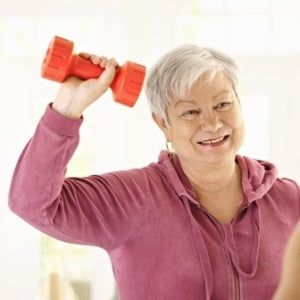Will exercise either aggravate or lessen your arthritic pain? Get advice on exercise and other typical issues when managing arthritic symptoms and pain.
Leading cause of pain and impaired mobility worldwide is arthritis. Advice about controlling arthritis and related disorders with exercise, medications, and stress management is abound. How then do you know what's best for you?
These do's and don'ts will help you sort things out.
Fundamental Ideas
Whatever your condition, controlling pain is simpler when you:
- Discover all you can about your illness, including any past joint damage and the kind of arthritis you have.
- Share your pain management strategy with friends and family as well as your doctor.
- Tell your doctor any changes in your pain.
Daily Tasks
In all activities—including sitting, standing, and moving—be aware of your joints.
- Keep your joints open. To exercise your joints through their complete range of motion, use mild daily stretches.
- Keep correct posture. A physical therapist can show you correct seated, standing, and moving techniques.
- Know your limits. Don't overdo; balance rest with activity.
Moreover, adjustments in lifestyle can be very important in controlling pain.
-
Manage your weight. Extra weight can aggravate arthritic conditions and cause more discomfort. The best strategy for weight control is slow, steady, long-term healthful improvements. See your doctor about what you may do to reach and remain at a reasonable weight.
- Quit smoking. Toxins in cigarette smoke can harm connective tissues, hence aggravating arthritic symptoms. Furthermore, research on e-cigarettes—electronic cigarettes—have indicated that they might damage connective tissues as well.
Action
Maintaining activity might help ease pain and stiffness if you have arthritis. It increases endurance, works muscles, and increases flexibility. It also helps you control your weight and raise your mood.
How should I act?
Choose exercises that build the muscles surrounding your joints without aggravating conditions. An fitness regimen tailored for you can be created by a physical or occupational therapist.
Give stretching, range-of- motion exercises, and slow strength building top priority. To help regulate your weight and boost your mood, do low-impact cardiovascular exercises include walking, cycling, and water workouts.
Things to avoid.
Steer clear of high impact and repeated motion-based activities including:
- Jogging
- Jumping
- Tennis
- High-impact aerobic workouts
- Repeating the same motion, say a tennis serve, over and over.
Medications
Arthritis pain can be relieved with several different kinds of medications. While most are rather safe, no medication is totally free of adverse effects. See your doctor to design a pain treatment strategy tailored to your particular pain complaints.
A pain management plan seeks to lessen suffering. It also seeks to reduce suffering, boost mobility, and raise standard of living.
Painkillers available without a prescription might assist relieve sporadic discomfort brought on by action your muscles and joints aren't used to, such gardening after a winter indoors. Among these medications are acetaminophen (Tylenol, others), ibuprofen (Advil, Motrin IB, others) and naproxen sodium (Aleve).
Applying capsaicin-containing creams to the skin over a sore joint will help to ease discomfort. Made from capsaicin, the component in chile peppers providing its spiciness, capsaicin cream is Capsaicin blocks pain impulses from the nerves, therefore momentarily relieving discomfort when applied to the skin over a sore joint or muscle.
One can use capsaicin cream either alone or in combination with other medications.
See your doctor if medications you purchase without a prescription don't help with your discomfort.
What should one avoid?
- Over-treatment. If you rely on over-the-counter painkillers regularly, see your doctor to guarantee suitable and safe use. Inquire about alternate strategies for handling persistent pain that cannot be relieved. Not all pain can be eliminated by medications. Learning to control pain can help you to avoid having it center your life.
- Under-treatment. Don't discount ongoing or severe arthritic discomfort. It could be the outcome of joint inflammation or injury needing regular medication. Discuss safely managing pain with your healthcare provider.
- Just concentrating on suffering. Pain involves psychological, emotional, as well as bodily elements. Feelings including wrath, despair, grief, and anxiety can all be brought on by persistent pain. Treating pain successfully calls for addressing the psychological, emotional, and physical components. See your doctor about ways you might enhance your mental and physical well-being.
- A pessimistic attitude. Neglecting negative ideas could cause them to spiral, aggravating pain and restricting mobility. Rather, concentrate on hobbies you enjoy and hang out with those who encourage you. If difficult to control negative ideas, think about consulting a therapist.
Both physical and mental health
It's hardly surprising that discomfort from arthritis can affect your attitude. It's natural to get upset or disappointed when daily tasks start to hurt. On the other hand, if these emotions develop into persistent anxiety or hopelessness, they can exacerbate pain and complicate management of it. If you feel depressed or anxious, speak with your doctor.
How should one behave?
Therapies breaking the mind-body link around pain include:
CBT, or cognitive behavioral treatment. Combining conversation therapy with behavior modification, this well-researched, successful method helps you identify and alter patterns of self-defining ideas and behaviors.
Relaxation strategies. You can relax by meditating, doing yoga or tai chi, deep breathing, listening to music, being in nature and journaling. Relaxation has no negative effects; rather, it can help to reduce pain.
Acupuncture is Acupuncture, in which a qualified practitioner places fine needles at designated body sites, can help some people with pain. Before you see progress, several weeks could pass.
Therapies for heat and cold.
Warm paraffin wax, hot baths or showers, and heating pads can all help to momentarily ease join pain. Take care not to scorcher yourself. Use the heating pad just 20 minutes at a time.
Particularly following exercise, ice packs can help reduce discomfort and inflammation. Between an ice pack and your skin, always lay a thin towel.
Massages- Short term pain and stiffness may be temporarily relieved with massage. Check that the massage therapist is aware of your arthritis and how it affects you.



